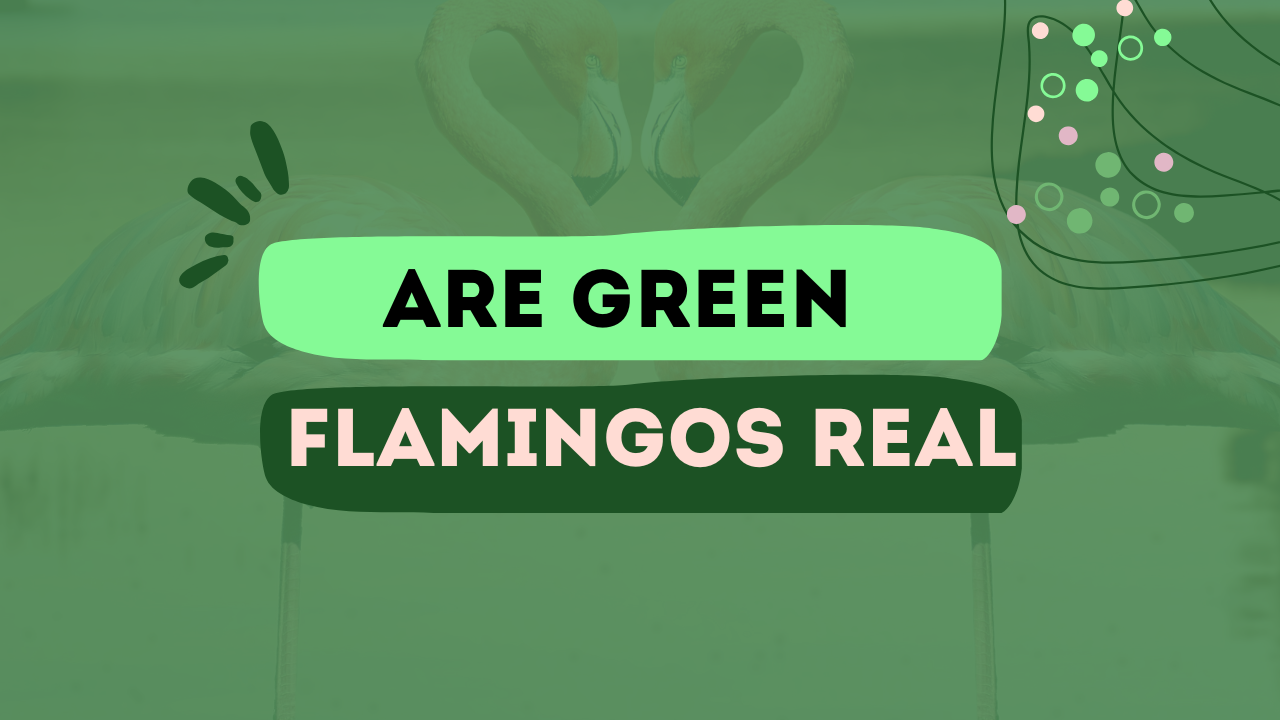Okay, let’s settle this once and for all—are green flamingos real? I mean, you might have seen those random posts online showing birds with bright green feathers, labeled as “rare green flamingo sighting.” And if you’re like me, you probably stared at the picture for a full 30 seconds wondering if someone dipped a flamingo in lime paint. It’s honestly hard to tell what’s real anymore, especially with all those AI-generated images floating around (don’t get me started on those deepfake animals). So, let’s dive into this feathered mystery and find out what’s fact, what’s fiction, and what might just be a little Photoshop magic.
First Things First: What Do Flamingos Usually Look Like?
Let’s start with what we do know about flamingos. They’re iconic for their pink or reddish feathers, those super long legs, and that funky curved beak. There are actually six species of flamingos, and you’ll find them in various parts of the world like South America, Africa, the Caribbean, and even parts of Europe and Asia.
The classic pink color? That’s actually not their natural base color. Weird, right? Flamingos get that lovely rosy hue from the food they eat. Their diet is rich in beta-carotene, which is found in algae, crustaceans, and other tiny aquatic snacks. Their bodies metabolize the pigments and—boom—pink feathers. Without those pigments, flamingos would be more of a dull grey-white color.
So, Can Flamingos Be Green Then?
Here’s where things get a bit interesting. Logically, if flamingos turn pink from eating pink or red pigment-rich food, could they turn green by eating green food?
In theory… maybe? But in reality, nope. Not really. Flamingos don’t eat the kinds of green-pigmented food that would turn them green. Chlorophyll, which gives plants their green color, doesn’t get metabolized the same way beta-carotene does. So even if a flamingo had a spinach smoothie for breakfast every day (which would be hilarious, btw), it wouldn’t turn green.
Also, flamingos are pretty picky eaters. Their diet is mostly made up of brine shrimp and algae found in salty lagoons and lakes. Not exactly a leafy salad situation. So yeah, turning green through diet isn’t really on the menu.
What About Mutations or Albino Flamingos?
You might be thinking, “Okay, what if it’s a super rare genetic mutation or something?” That’s a fair thought. Albino flamingos do exist, although they’re extremely rare. But albino doesn’t mean green—it usually means pale or completely white due to the absence of melanin. Mutations that would cause a flamingo to turn green would have to be wildly unusual and, as far as science knows, haven’t actually been observed in the wild.
Even flamingos kept in captivity don’t turn green unless, of course, someone gives them a weird dye job. (Please don’t do that—it’s not good for them.)
So… What’s Up With Those Green Flamingo Pics Online?
Ah yes, the internet. Land of hoaxes, photo filters, and digital artists with way too much time on their hands.
A lot of the green flamingo images floating around are either Photoshop edits, AI-generated art, or, in some cases, birds that aren’t even flamingos. Some other bird species, like herons or storks, might look vaguely flamingo-ish at a glance, especially if the photo is taken at a weird angle. Add a green hue, and boom—social media gold.
Some people have even painted plastic lawn flamingos green for garden decor or themed parties. One post even showed a “St. Patrick’s Day flamingo” covered in green glitter. Cute? Yes. Real? Absolutely not.
Are There Any Birds That Are Actually Green?
Oh yes, tons! While green flamingos are a no-go, there are plenty of real birds that sport stunning green feathers. Parrots, for starters, are basically the poster birds for green. Then you’ve got green bee-eaters, green herons, and even some species of hummingbirds that shimmer like tiny emeralds. So if you’re craving a green bird sighting, don’t worry—the avian world has you covered.
Why Do People Keep Asking If Green Flamingos Are Real?
Honestly? Because it’s kinda fun to believe in weird, rare animals. People love cryptids, rare animal sightings, and quirky natural oddities. It’s the same reason people believe in things like blue tigers, pink dolphins, and glowing squirrels (okay, that last one might actually be a thing—bioluminescence is wild).
Also, with social media algorithms rewarding viral content, a photo of a green flamingo is bound to grab attention. Even if deep down, most of us know it’s probably fake, there’s still that tiny part of our brain going, “…but what if?”
TL;DR: Are Green Flamingos Real?
Nope. Green flamingos are not real. Not naturally, anyway. They don’t exist in the wild, they can’t turn green through diet, and there’s no scientific evidence of a green-flamingo gene mutation. Any green flamingo you’ve seen is either fake, painted, digitally altered, or maybe even just a totally different bird altogether.
But hey, it’s still a fun thought, right? Imagine a bright green flamingo strutting around like it’s got somewhere important to be on St. Patrick’s Day. Iconic.
Final Thoughts
While the answer to “are green flamingos real” is a solid no, that doesn’t mean the world of birds isn’t full of color and surprises. Nature is endlessly weird and wonderful. From purple gallinules to turquoise kingfishers, there’s no shortage of wild and wacky birds out there—just not green flamingos. Sorry!
But don’t let that stop you from daydreaming about one. Who knows, maybe one day someone will stumble across a never-before-seen species of flamingo. Until then, the pink ones will have to do. And let’s be honest—they’re pretty fabulous as-is.

